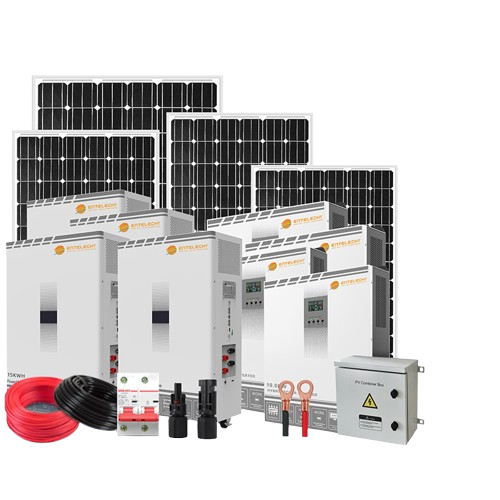Switching to solar energy is not only good for the environment but also for your wallet, thanks to a variety of solar incentives and tax credits available in 2025. These financial benefits can significantly reduce the upfront cost of installing a solar system, making it more affordable for homeowners and businesses alike. In this blog post, we’ll break down the top solar incentives and tax credits you can claim in 2025, helping you maximize your savings and ROI.
1. Federal Solar Tax Credit (Investment Tax Credit – ITC)
The Federal Solar Tax Credit, also known as the Investment Tax Credit (ITC), is one of the most significant incentives for going solar. Here’s what you need to know:
- What It Is: A tax credit that allows you to deduct 30% of the cost of your solar system from your federal taxes.
- Eligibility: Available to homeowners and businesses that purchase solar systems (not leased systems).
- How to Claim: File IRS Form 5695 with your tax return.
- Example: If your solar system costs 20,000,youcanclaima∗∗20,000,youcanclaima∗∗6,000 tax credit**.
Important Note: The ITC was extended through 2032 under the Inflation Reduction Act, so you can still claim 30% in 2025.
2. State and Local Solar Incentives
In addition to the federal tax credit, many states and local governments offer their own incentives to encourage solar adoption. These can include:
State Tax Credits
- Some states offer additional tax credits on top of the federal ITC.
- Examples:
- New York: 25% state tax credit (up to $5,000).
- Massachusetts: 15% state tax credit (up to $1,000).
Cash Rebates
- Many states and utilities offer cash rebates for installing solar panels.
- Examples:
- California: Self-Generation Incentive Program (SGIP) for solar+storage systems.
- Arizona: Residential Solar Energy Credit.
Property Tax Exemptions
- Some states exempt the added value of solar panels from property taxes.
- Examples: Texas, Florida, and New Jersey.
Sales Tax Exemptions
- Several states waive sales tax on solar equipment.
- Examples: Oregon, New Mexico, and Louisiana.
3. Net Metering
Net metering is a policy that allows you to sell excess solar energy back to the grid in exchange for credits on your electricity bill. Here’s how it works:
- How It Helps: Reduces your electricity bill by offsetting the cost of grid power.
- Availability: Offered in most states, but policies vary.
- Example: If your solar panels produce more energy than you use, the excess is credited to your account, lowering your next bill.
4. Solar Renewable Energy Certificates (SRECs)
SRECs are another way to earn money from your solar system. Here’s how they work:
- What They Are: Certificates earned for every megawatt-hour (MWh) of solar energy your system produces.
- How to Sell: SRECs can be sold to utilities that need to meet renewable energy quotas.
- Value: Varies by state (e.g., 200−200−300 per SREC in New Jersey, 50−50−100 in Maryland).
5. Local Utility Incentives
Many utility companies offer their own incentives to encourage solar adoption. These can include:
- Cash Rebates: One-time payments for installing solar panels.
- Performance-Based Incentives (PBIs): Payments based on the amount of energy your system produces.
- Example: Duke Energy offers rebates for residential and commercial solar installations in some regions.
6. Accelerated Depreciation (For Businesses)
Businesses that install solar systems can take advantage of accelerated depreciation to reduce taxable income. Here’s how it works:
- What It Is: A tax deduction that allows businesses to recover the cost of their solar system over a shorter period.
- How It Helps: Reduces taxable income, lowering your overall tax burden.
- Example: A business can deduct 85% of the system cost in the first year using the Modified Accelerated Cost Recovery System (MACRS).
7. USDA REAP Grants (For Rural Businesses)
The Rural Energy for America Program (REAP) provides grants and loans to rural businesses and agricultural producers for renewable energy systems, including solar.
- Eligibility: Rural small businesses and farms.
- Grant Amount: Up to 50% of the project cost.
- Example: A 100,000solarprojectcouldqualifyfora100,000solarprojectcouldqualifyfora50,000 grant.
How to Claim Solar Incentives and Tax Credits
- Research Local Programs: Check your state and utility websites for available incentives.
- Keep Records: Save all receipts, contracts, and documentation related to your solar installation.
- File the Right Forms:
- Federal ITC: IRS Form 5695.
- State Credits: Check with your state’s tax department.
- Work with a Professional: A solar installer or tax professional can help you navigate the process.
FAQs About Solar Incentives
1. Can I combine multiple incentives?
- Yes, you can stack federal, state, and local incentives to maximize savings.
2. Do incentives apply to leased systems?
- No, leased systems typically don’t qualify for tax credits (the leasing company claims them).
3. What happens if my tax credit exceeds my tax liability?
- The federal ITC can be rolled over to future tax years.
4. Are there income limits for solar incentives?
- Most incentives have no income limits, but some state programs may have restrictions.
5. Do incentives apply to battery storage?
- Yes, many incentives (like the federal ITC) also apply to solar batteries.
Conclusion
Solar incentives and tax credits make going solar more affordable than ever. In 2025, you can take advantage of the 30% federal tax credit, state and local incentives, net metering, and more to significantly reduce the cost of your solar system. Whether you’re a homeowner or a business, these financial benefits can help you save money, reduce your carbon footprint, and achieve energy independence.
Ready to explore your options? Contact a trusted solar installer today to learn more about available incentives and start your journey toward clean, renewable energy.
